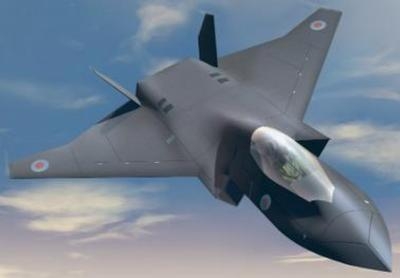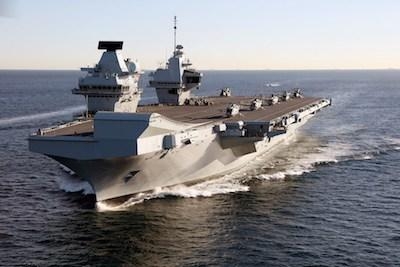BAE-Mitsubishi Deal Advances U.K. Asian Interests
In a move that speaks to the twilight of American hegemony, Britain and Japan are moving closer to an agreement to merge their sixth-generation fighter aircraft programs: Britain’s BAE Tempest and Japan’s Mitsubishi F-X.

Such an agreement would mark the first instance in which Japan has sought a non-U.S. partner for a large military program, and the first major collaboration between Tokyo and London.
The plan to combine the Japanese F-X and British Tempest programs has been kept under tight wraps, and was brought to light by insider sources who’ve reportedly placed emphasis on their desire to remain anonymous. "The main thing that we are aiming for is to build a common jet, that may have small differences in design for each country," one of the sources reportedly stated.
Collaboration would spread the cost of developing the new aircraft between the two nations, while exporting would increase production lots and reduce the price per plane, thereby helping both Britain and Japan stretch their defense budgets. Ostensibly, Britain would oversee European exports as Japan saw to the Asian market—another of the three insider sources said.
The deal would represent a deepening of security ties between the two close U.S. allies. Post-Brexit London is taking on a bigger military role in Asia under a strategic "tilt" towards the Indo-Pacific, and Tokyo is expanding Japanese defense cooperation beyond Washington.
The UK’s ‘tilt’ towards the Indo-Pacific is based on reasons of economy, as the last decade has seen the region emerge as the world’s economic growth-engine; security, in that it is essential to preserve the freedom of navigation as geopolitical competition in the region intensifies and potential flashpoints develop; and justice, to promote open societies and to uphold international law and human rights.
In 2018, the UK opened a naval support facility in Bahrain, the nation’s first permanent base in the western Indian Ocean since its armed forces withdrew from East of Suez in the 1970s. The UK now has seven permanent points of presence in the Indian Ocean: Bahrain, Oman, Kenya, Brunei, Singapore, Diego Garcia, and Qatar. This year the UK’s new Queen Elizabeth aircraft carrier will undertake its first operational deployment through the Indian Ocean.

Partnering with Japan on a program as complex and binding as developing a sixth-generation fighter aircraft underscores the U.K.’s commitment to the its stated objective of being the European nation with the broadest and most integrated presence in the Indo-Pacific region within the next nine years. To date, the UK has outlined only a framework for its tilt—but the inchoate aerospace partnership with Japan imparts substance to subject framework.
Conversely, alignment with a powerful European ally speaks to Japanese concerns about future Chinese belligerence and comes as the tech-powerhouse readies to double its defense spending over the coming decade. Japan's desire to strengthen its hand against its Chinese neighbor—and historical enemy—has taken on new urgency in the wake of the Russian invasion of Ukraine.
In addition to bolstering Japanese national security, partnership with the U.K. affords Japanese companies—which were banned from exporting weapons overseas until 2014—opportunity to access foreign markets and European technology with potentially fewer restrictions than imposed by Washington during past, military program partnerships with the U.S.
Japan Defense Ministry officials estimate the program cost of developing the F-X to be approximately $40-billion, $700-million of which has been allocated this year. The BAE-led Tempest project to field a replacement for the European Typhoon combat jet has a more modest governmental budget of 2-billion pounds ($2.38-billion) until 2025, when full development is slated to commence.
Lockheed, in 2018, proposed predicating Japan’s emergent F-X fighter upon an F-22 Raptor airframe and F-35 components. The suggestion heralded the end of Japan’s partnership with Lockheed as U.S. control over sensitive F-22 and F-35 technologies would have empowered Washington to dictate when and how Japan maintained and upgraded its planes—the sources stated.
 Unfortunate... ANN/SportPlane Resource Guide Adds To Cautionary Advisories
Unfortunate... ANN/SportPlane Resource Guide Adds To Cautionary Advisories ANN FAQ: Turn On Post Notifications
ANN FAQ: Turn On Post Notifications ANN's Daily Aero-Term (04.29.24): Visual Approach Slope Indicator (VASI)
ANN's Daily Aero-Term (04.29.24): Visual Approach Slope Indicator (VASI) ANN's Daily Aero-Term (04.28.24): Airport Marking Aids
ANN's Daily Aero-Term (04.28.24): Airport Marking Aids ANN's Daily Aero-Linx (04.28.24)
ANN's Daily Aero-Linx (04.28.24)




